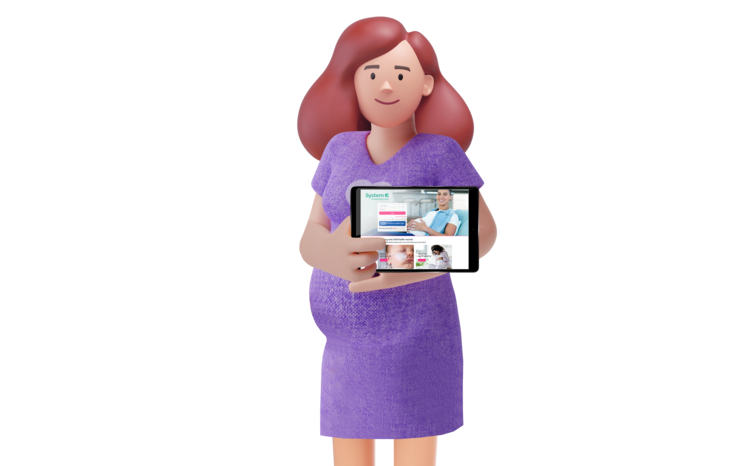Maternity delivery delays
- 16 March 2007
Joe Fernandez
 Maternity systems are one of the most important hospital clinical departmental systems. Possessing a modern system not only results in safer care for mothers and babies but can significantly reduce the costs of clinical negligence cover.
Maternity systems are one of the most important hospital clinical departmental systems. Possessing a modern system not only results in safer care for mothers and babies but can significantly reduce the costs of clinical negligence cover.
Understandably then they formed a ‘core’ component of the strategic Care Records Service ‘product’ that Local Service Providers were contracted to deliver as part of the £12.4 billion NHS IT programme. But three years on only one LSP, Fujitsu, has yet installed systems providing basic maternity tools.
This week EHI exclusively reported that Royal Shrewsbury Hospital NHS Trust, Shropshire, which had been the pilot site for Computer Science Corporation’s (CSC) iSoft’s Evolution maternity system, has given up waiting and instead bought an alternative off the shelf. This forms part of a growing trend of trusts opting for maternity systems from specialist suppliers outside of nationally funded LSP contracts.
Many trusts continue to hang on waiting for the LSP systems, hoping they can save money by receiving nationally funded NPfIT MIS systems that meet their requirements.
And there are signs that the LSPs have made progress. CSC has told EHI that it will release iSoft’s Evolution maternity system later this month. The Cerner Millennium system, used in the Southern and London clusters, meanwhile offers basic maternity tools – albeit not always used. A fully fledged maternity system comes in the third release of Millennium due in 2008
LSP progress too slow for some
However, other trusts have already decided they can no longer wait for an NPfIT-funded MIS to be deployed with old systems on their last legs, existing system suppliers withdrawing support and pressures to achieve financial savings such as the Clinical Negligence Scheme for Trusts (CNST) insurance plan and support Payment by Results.
The dilemma some trusts face is highlighted in a November 2006 board paper, from the Hillingdon Hospital NHS Trust, presenting the business case for a new maternity information case, spells out the trust’s concerns over the NPfIT delays on maternity.
The paper states: “The present system relies on laborious manual data validation checks to ensure all activity relating to Payment by Results (PbR) is captured. In addition it does not provide the maternity service with key information to review and improve clinical performance indicators on a systematic basis.”
The paper by Hilligdon’s IT director Stephen Meechan explains why waiting for the NPfIT solution was not an option: “The Local Service Provider offering of the PAS solution ‘Foundation Release’ will include maternity as an additional product as part of this solution. The current specification of this LSP Maternity solution does not include all the functionality required by Maternity.
“This additional functionality will be included as part of ‘Foundation Enhancement Release’; there is no set timescale as yet for this release. The Maternity module is a part of the ‘Foundation Release’ solution; therefore the Trust would need to implement this PAS solution before it could accept the Maternity module. This would be over two years away and would require the Trust to implement Cerner PAS first and then the enhanced maternity system, assuming it will be fully developed by then.”
As a result the trust went out to competitive tender, with bids from Ciconia, EuroKing, Huntleigh and iSoft. The lowest quote came from Ciconia’s quotation of £84,7000 for three years, while iSoft’s was four times as high at £334,212 for three years. The eventual winner was EuroKing.
Trusts looking for tactical MIS alternatives
EuroKing’s managing director, Jonathan Raife, told EHI: “Trusts are very disappointed over what has happened over the last few years. The LSP solutions that have been offered to date are not fit for purpose and so trusts are looking for other suppliers to provide their hospitals with a good quality maternity information system which meets their needs.
“Decisions are being made by chief executives, who are receiving business proposals, like the Hillingdon case where boards are starting to get concerned that clinical practice is not as simple as it should be. Patient’s lives are at stake, sot they can’t wait any longer.”
Another trust who chose EuroKing E3 ahead of Cerner Millennium is the Winchester and Eastleigh Healthcare NHS Trust. The trust decided to go ahead with procurement of a new system, despite also taking the Millenium R0 product, which was deployed in February.
Winchester’s managing director of clinical support and asset manager, Peter Knight, told EHI: “R0 only has a basic maternity suite in it, which would not have sufficed for us to provide vital administration for more than 3000 babies each year. EuroKing offers easy data entry, reporting and audit functionality which we required and so we took a tactical decision to ensure the replacement for our existing Protos platform was a sensible platform."
Knight added: “Full maternity capability from the Millenium platform is not anticipated until R2 is released, so we had to ensure we had a system to replace Protos meanwhile. E3 includes necessary archiving and is capable of meeting our operational needs whilst bridging several gaps in functionality from the incumbent system and the adoption of CRS.”
Another MIS supplier who are enjoying success in deploying systems to trusts outside of the National Programme, is Huntleigh Healthcare. They recently deployed their Eclipse system at both the Bradford Teaching Hospitals and Surrey and Sussex Healthcare NHS Trusts. Their latest NHS site is Royal Shrewsbury Hospital NHS Trust.
Intense pressures on maternity providers
A Huntleigh spokesperson explained to EHI why they felt trusts had felt the need to go outside NPfIT: “Maternity units are pressed by a number of urgent business drivers especially improving patient care, supporting payment by results and the need to manage obstetric risk. Litigation for maternity related care makes up two thirds of the £12bn spent by the NHS in legal costs in the last 10 years."
The Huntleigh spokesperson added: “The NHS insurance scheme [CNST] offers substantial discounts to trusts who can demonstrate they are managing obstetric risk appropriately and trusts believe an effective and intelligent computer system is a key tool in achieving this.”
EHI contacted ten trusts who have installed new systems in place, or have gone out to tender to buy a new MIS.
All told EHI that they were under pressure to invest in new systems due to the licence agreement for their former systems nearing an end, and that at the time there was no immediate IT solution available via the National Programme for maternity while they faced an urgent requirement for an MIS.
Heart of England’s maternity information system manager, Julie Tindale, told EHI: “Each Trust has its own problems and targets set by the organisations that commission their services. They will have to be able to provide full clinical coding, evidence based care, evidence for minimizing clinical risk, adequate training and updating of clinical staff, data response to national and regional reports.
Tindale added: “The maternity services are still obliged to apply for NHS numbers for babies as close to birth as possible. The way they choose to address these issues will be individual and take into consideration differing patient populations and service commissioners.”
Heart of England went live with EuroKing E3 last November upgrading from the K2 system they originally had deployed in summer 2000.
Using EuroKing the trust can now register babies straight onto the PAS system after birth with their NHS number included in their PAS record. As a result the trust has been able to achieve CNST level three – the same objective that Shrewsbury say led them to leave the national programme, and with the E3 system,
MIS offers savings on CNST
The CNST Maternity Standards apply to trusts providing labour ward services. They assess the way risk management activities are organised in these important services, focusing on areas such as communication, clinical care and staffing levels.
The CNST Standards are divided into three “levels”: one, two and three. Trusts which achieve success at level one in the relevant standards receive a 10% discount on their CNST contributions, with discounts of 20% and 30% available to those passing the higher levels – the discount could eventually be as high as £500,000.
Tindale said that Heart of England will see if there is a need to upgrade its system to an NPfIT solution when it is demonstrated to them.
“The trust will decide if E3 remains fit for purpose in accordance with NPfIT or if we will substitute it with the cluster solution. The trust would have to be sure we would be having like for like functionality and access to archived maternity and other clinical data, in order for us to maintain the highest standards of care for our mothers and babies.”
Summarising trusts’ needs, Raife said: “We can see a wave of trusts who are fed up of waiting for the national programme, and a lot more people are moving for a more closely integrated solution.”




